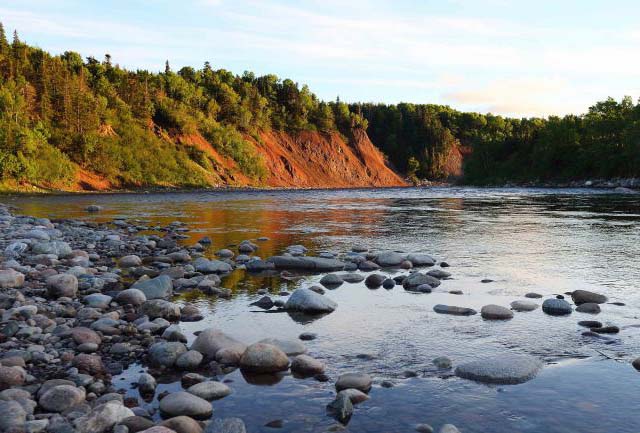|
A portion of the Van Horne estate in Newfoundland - Date unknown Anonymous Photographer.
13 November 2014
Van Horne Descendants Donate Estate
to Nature Conservancy
St. Fintan's Newfoundland - The Nature Conservancy of Canada in Newfoundland and Labrador has finalized a project involving a 606-acre
site on the Crabbes River near the town of St. Fintan's.
The land was donated by the descendants of railway builder Sir William C. Van Horne, who was seen in the photo of the Last Spike.
Van Horne oversaw the construction of the Canadian Pacific Railway (CPR) and was its vice-president when it linked the nation from coast to coast.
Van Horne acquired the Crabbes River property in 1900.
The land has vast old-growth forest, including white and yellow birch trees and white pine, provides habitat for wild Atlantic salmon, and buffers about two
kilometres of a designated provincial salmon river.
It is also habitat for a variety of rare plants along the river shoreline, including the long-styled rush and the clasping-leaf dogbane.
The area is also home to black bears and beaver and a diversity of migratory songbirds and waterfowl, such as black ducks, American bittern, yellow warbler,
and redstarts.
The non-profit said besides the Van Horne family, there has been funding for the project from organizations including the federal government, TD Bank Group,
Leo Power, Rob Crosbie, The Charles Johnson Family, Sam and Ruth Ann Horwood, and other individual donors.
"Mangron Ltd. is very happy to announce that it is donating the Van Horne property to the Nature Conservancy of Canada," Mangron spokesperson Sally
Hannon said in a news release.
"Mangron, which represents descendants of Sir William Van Horne, is delighted that the Nature Conservancy will preserve the property in its natural state,
for the benefit of Newfoundland and Labrador and for all Canadians," Hannon said.
"We think the Nature Conservancy of Canada will be the ideal steward of this unique piece of land and that William Van Horne would be as pleased as we are
with the preservation of the property for future generations."
The Crabbes River site will continue to be accessible for recreation such as hiking, hunting, and salmon fishing.
The abandoned Newfoundland railway bed, now the Newfoundland T'Railway recreational trail, runs along the western property boundary.
A reconstructed railway bridge over the Crabbes River offers a view of the site.
Anonymous Author.
|


